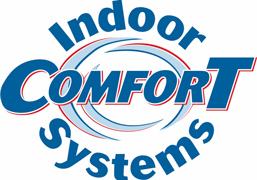
You shouldn’t need to give up comfort or drain your wallet to keep your house at a pleasant temp during hot days.
But what is the best temp, exactly? We go over ideas from energy specialists so you can select the best temperature for your loved ones.
Here’s what we recommend for the most energy-efficient setting for air conditioning in Croydon.
Recommended Thermostat Settings for Summer
Most households find setting the thermostat at 72-73 degrees is ideal. However, if there’s a huge difference between your inside and exterior temperatures, your AC expenses will be larger.
This is our advice based on the U.S. Department of Energy (DOE) and ENERGY STAR®.
While at home: 78 degrees. While that appears warm, there are approaches you can keep your home cool without having the AC on constantly.
Keeping windows and curtains closed during the day keeps chilled air where it belongs—within your home. Some window coverings, such as honeycomb shades or plantation shutters, are designed to give extra insulation and better energy savings.
If you have ceiling fans in your house, the DOE says you can raise thermostat temperatures about 4 degrees warmer without sacrificing comfort. That’s because they freshen through a windchill effect. As they cool people, not spaces, turn them off when you leave a room.
If 78 degrees still appears too uncomfortable initially, try doing a trial for a week or so. Begin by increasing your temperature to 78 degrees while you’re at your house. Then, steadily lower it while using the advice above. You could be astonished at how refreshed you feel at a higher temperature setting.
While away: 88 degrees. There’s no rationale for keeping the air conditioning going all day while your house is empty. Moving the temp 7–10 degrees warmer can save you anywhere from 5–15% on your electricity bills, according to the DOE.
When you come home, don’t be tempted to switch your thermostat colder than 78 to cool your house faster. This isn’t productive and usually leads to a higher air conditioner bill.
A programmable thermostat is a useful approach to keep your settings under control, but you need to set programs. If you don’t utilize programs, you might forget to change the set temperature when you leave.
If you need a hassle-free solution, think about getting a smart thermostat. This thermostat links with your phone, so it realizes when you’re at home and when you’re out. Then it instinctively adjusts temperature settings for the biggest savings. How much exactly? About $180 yearly on heating and cooling, according to ENERGY STAR.
Another advantage of getting a smart thermostat? You can use your phone to monitor and regulate temperature settings from nearly anywhere.
While sleeping: Around 70 degrees. While ENERGY STAR recommends 82 degrees, that could be unpleasant for most families. Most people sleep better when their sleeping space is cold, so that’s why the National Sleep Foundation advises 60–67 degrees. But that might be too cool, based on your pajama and blanket preference.
We advise using a similar test over a week, setting your thermostat higher and progressively turning it down to choose the best temperature for your family. On pleasant nights, you may discover keeping windows open at night and relying on a ceiling fan is a preferable option than operating the AC.
More Methods to Save Energy During Warm Weather
There are extra methods you can conserve money on cooling bills throughout the summer.
- Get an energy-efficient AC system. Central air conditioners only work for about 12–15 years and become less efficient as they get older. An upgraded air conditioner can keep your house more comfortable while keeping AC costs down.
- Book annual air conditioner service. Annual air conditioner maintenance keeps your unit working like it should and may help it work at better efficiency. It may also help extend its life cycle, since it helps professionals to spot little issues before they cause a major meltdown.
- Switch air filters frequently. Use manufacturer instructions for changing your air filter. A clogged filter can lead to your system short cycling, or turn on and off too frequently, and raise your electricity.
- Inspect attic insulation levels. Almost 90% of residences in the USA don’t have enough insulation, according to the Insulation Institute. Most southern climates require 13–14” of attic insulation, while northern climates require 16–18”.
- Have your ductwork examined. Ductwork that has separated over time can seep conditioned air into your attic, walls or crawl space. This can create huge comfort issues in your house, including hot and cold spots.
- Seal holes, doors and windows. Keep hot air where it should be by sealing openings. You can also caulk or weather strip doors to seal more conditioned air inside.
Use Less Energy During Warm Weather with Indoor Comfort Systems HVAC
If you are looking to conserve more energy during warm weather, our Indoor Comfort Systems HVAC experts can assist you. Get in touch with us at 215-741-5505 or contact us online for additional details about our energy-saving cooling options.
